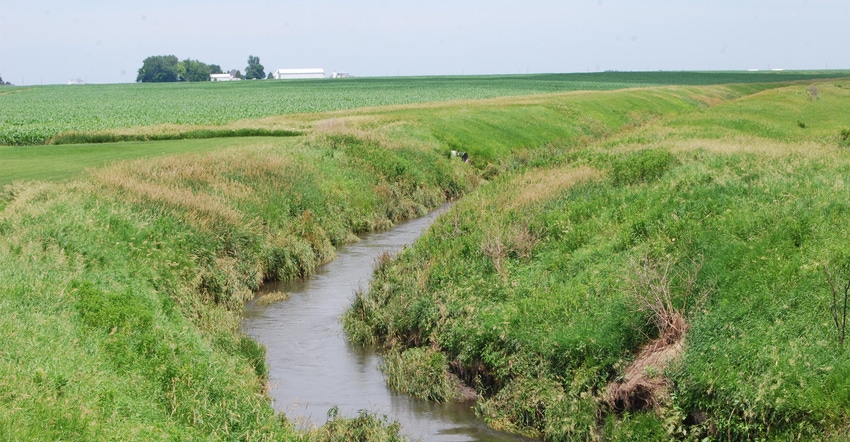February 28, 2020

On Jan. 23, the U.S. Environmental Protection Agency and the U.S. Department of the Army signed the final Navigable Waters Protection Rule, a rule that defines “waters of the United States” or the jurisdictional scope of the Clean Water Act. The NWPR will be effective 60 days from its publication in the Federal Register.
Finalizing the NWPR completes the second step of a two-step process the Trump administration began in 2017 to replace the 2015 Clean Water Rule, which clarified the scope of “waters of the United States” protected under the act. The first step was completed Dec. 23, when a final rule to repeal the WOTUS rule was finalized.
Controversial from start
The WOTUS rule was the subject of court challenges and controversy since it was unveiled on May 27, 2015. The majority of U.S. states alleged that they were harmed because WOTUS expanded the number of waters subject to federal jurisdiction, eroded states’ authority over their own waters and undermined state sovereignty.
Industry groups argued the rule greatly increased the percentage of waters in the United States subject to CWA jurisdiction, and that the new definition was so expansive that many more landowners would have to obtain permits or pay fines for conducting normal activities such as spraying weeds, installing a fence or removing trees.
Because of the ongoing litigation, more than half the states never were subject to the WOTUS rule. Pre-2015 rules remained in place because court injunctions blocked enforcement of WOTUS. However, 22 states were subject to the WOTUS rule at the time of its repeal, establishing a patchwork system where landowners were treated differently depending upon the state in which they lived.
Repealing WOTUS and replacing it with the NWPR means all states are again subject to the same standard, at least for now. Environmental and industry groups have already filed lawsuits challenging the repeal of the WOTUS rule. The NWPR will no doubt face its own lawsuits once it is published.
Navigable Waters Protection Rule
EPA and the U.S. Army state in the preamble to the NWPR that the final definition increases the predictability and consistency of CWA programs by clarifying the scope of “waters of the United States” federally regulated under the act. They say the definition “strikes a reasonable and appropriate balance between federal and state waters, and carries out Congress’ overall objective to restore and maintain the integrity of the nation’s waters in a manner that preserves the traditional sovereignty of states over their own land and water resources.”
The NWPR should lessen the number of permits landowners must obtain to conduct activities on their property. EPA requires permits to discharge “pollutants” through a “point source” into “waters of the United States.” Point sources include most any identifiable source, such as a pipe, a ditch or a confined animal feeding operation. Landowners must also obtain permits from the U.S. Army Corps to conduct any digging, dredging or development on land determined to be a federal wetland. Permits are expensive and landowners conducting activities without the required permits are subject to steep civil fines and potential criminal sanctions.
4 waters of U.S.
The NWPR outlines just four categories considered “waters of the United States,” subject to CWA jurisdiction:
1. Territorial seas and traditional navigable waters. This category includes territorial seas and waters that are used or were used in the past in interstate or foreign commerce, including waters subject to the ebb and flow of the tide. This includes, for example, the Mississippi River, the Great Lakes and the Chesapeake Bay.
2. Tributaries. This category significantly narrows the definition of “tributary,” as compared to the WOTUS rule. It defines tributary as a river, stream or similar naturally occurring surface water channel that contributes perennial or intermittent surface water flow to a traditional navigable water “in a typical year,” either directly or through other “waters of the United States.” The definition removes from jurisdiction streams that exist only after rain or snowfall.
The new term “typical year,” means within the normal range of precipitation over a rolling 30-year period for a particular geographic area. Under this definition, a typical year would generally not include times of drought or extreme flooding.
3. Lakes, ponds and impoundments of jurisdictional waters. This category includes lakes and ponds that qualify as traditional navigable waters, those that contribute surface flow to a traditional navigable water, or those that are flooded by other jurisdictional water in a typical year. This is a new category of jurisdictional water. Under the WOTUS rule, lakes and ponds were jurisdictional if they met other definitions, including that for broadly defined “neighboring” waters (a term which doesn’t exist under the NWPR).
4. Adjacent wetlands. The NWPR significantly reduces the number of wetlands subject to CWA jurisdiction. Adjacent wetlands include those:
physically touch other jurisdictional waters
inundated by flooding from a jurisdictional water in a typical year
physically separated from a jurisdictional water only by a natural feature such as a bank or berm
physically separated from jurisdictional water only by an artificial barrier, such as a dike, that allows for a direct hydrological surface connection to the jurisdictional water in a typical year
No wetlands are evaluated by the “significant nexus” test under the NWPR.
The agencies will continue to use existing resources and practices to identify the presence of wetlands. Remote tools may include aerial photography and satellite imagery, in addition to federal, state and local maps.
Excluded from jurisdiction
The following categories are specifically excluded from the definition of “waters of the United States” under the NWPR:
waters not identified by the above four categories
groundwater, including groundwater drained through subsurface drainage systems
ephemeral features
diffuse stormwater runoff
ditches not meeting the definition of a traditional navigable water, a tributary or adjacent wetlands
prior converted cropland
artificially irrigated areas
artificial lakes and ponds
water-filled depressions created in upland incidental to mining or construction activity
stormwater control features
wastewater recycling structures
waste treatment systems
Prior converted cropland remains excluded from the definition of “waters of the United States.” The NWPR, however, for the first time clarifies its meaning and should provide more certainty to farmers regarding its definition. Under the NWPR, prior converted cropland means any area that, prior to Dec. 23, 1985, was drained or otherwise manipulated for the purpose of making agricultural production possible. The agencies will recognize designations of prior converted cropland made by the U.S. secretary of agriculture.
An area loses its status as prior converted cropland when it is abandoned and reverts to wetlands. Abandonment occurs when prior converted cropland is not used for agricultural purposes at least once in the immediately preceding five years.
The NWPR clarifies that cropland left idle for conservation or agricultural purposes for any period remains in agricultural use. This means cropland enrolled in the Conservation Reserve Program or other programs that prevent erosion or natural resource degradation retain their prior converted cropland exclusion.
Agricultural uses also include irrigation, cranberry bogs, nutrient retention and land idled for soil recovery following natural disasters. If an area loses its prior converted cropland status because it is abandoned, it will only be jurisdictional under CWA if it meets the new definition of an adjacent wetland.
The new NWPR concludes a three-year effort by the Trump administration to repeal and replace the WOTUS rule. We will keep you posted as the implementation of the new rule begins and new lawsuits are filed.
Tidgren is an attorney and director of the Center for Ag Law and Taxation at ISU. Contact her at [email protected].
About the Author(s)
You May Also Like






